Chest vs Bra Size: What’s the Difference?
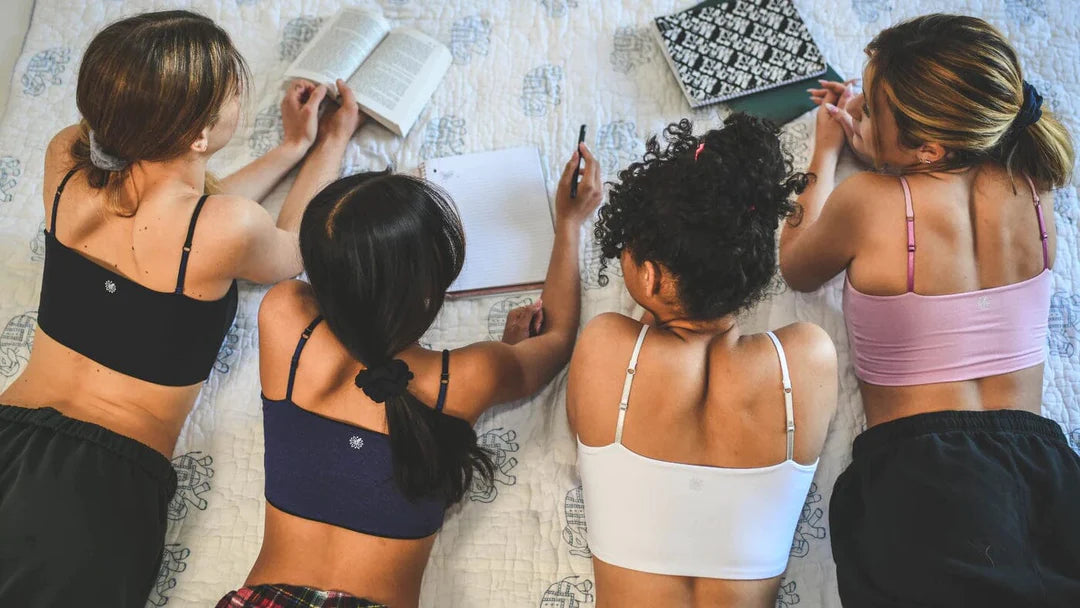
Navigating the world of bra sizes can feel a bit tricky with its blend of numbers and letters. While many assume 'A' is small and 'D' is large, there's more beneath the surface. The relationship between band and cup sizes introduces some unexpected twists. But how significant are these differences, and what do they mean for finding the perfect fit? Let's embark on a journey to uncover the true story behind bra sizes, ensuring you're well-equipped to make informed choices.
Understanding the Basics
Let’s get down to the basics of bra sizing. Each size entails a number and a letter, which carries a unique significance that plays a pivotal role in ensuring the perfect fit. Here is what they mean:
- Numbers and Their Meaning: Bra sizes often start with numbers like 32, 34, or 36. This isn't arbitrary; it represents the band size. Derived from a snug measurement around the ribcage, just below the breasts, this number is crucial as it forms the base support of the bra, ensuring it stays in place.
- Letters and Their Role: Accompanying the number is a letter, ranging from A to beyond D. This indicates the cup size, which is determined by measuring the difference between the band size and the circumference around the fullest part of the chest. The cup size is vital for providing the right coverage, shaping, and comfort.
- Working Together: The combination of the band and cup size ensures that the bra provides both support and a flattering silhouette. While the band anchors it, the cup offers the right containment and shape.
The Difference Between Chest Size and Bra Size
The key difference between chest size and bra size lies in the details. While chest size is a single measurement around the fullest part of your chest, bra size is a more complex calculation involving both the band size (measurement around the ribcage) and the cup size (determined by the difference between the band size and chest size). Understanding this distinction is crucial for finding a bra that not only fits but also provides the support and comfort you need.
Chest Size and Bra Size: A Tabular Comparison
|
Feature |
Chest Size |
Bra Size |
|
Measurement Area |
Around the fullest part of the bust |
Band size: Around the ribcage below the bust Cup size: Difference between band and chest size |
|
Units |
Inches or centimeters |
Band size: Inches or centimeters Cup size: Letters (e.g., A, B, C) |
|
Components |
Single measurement |
Two components: Band size and cup size |
|
Typical Use |
General body measurement |
Specific to bra fitting |
|
Variations |
Fairly consistent across different contexts |
Can vary significantly between brands and styles |
The Misconceptions
Navigating the world of bra sizes can be riddled with myths and misunderstandings. Let's delve deeper into these misconceptions, demystifying the intricacies of sizing:
- Fixed Sizing: The relationship between cup and band size is intricate. A 34C and a 36B, while sounding different, can have cups that hold almost identical volumes. This is because as the band size increases, the cup volume for a given letter also increases, making the sizing relative.
- Sister Sizing Isn't a Thing: This concept further emphasizes the interplay between band and cup sizes. 'Sister sizes' are different measurements of bras that have the same cup volume, even though the band size and cup letter vary. For example, a 34C has the same cup volume as a 32D and a 36B. Understanding this can be a game-changer when shopping for bras, especially if your usual size isn't available.
- Only One Correct Size: Our bodies change over time due to weight fluctuations, hormonal changes, and aging. A size that fits perfectly today might not work as well in a few months. Staying open to trying different sizes can lead to a more comfortable fit.
- Cup Size Is Absolute: One of the most common misconceptions is that cup size alone determines breast size. In reality, cup size is relative to band size. For instance, a ‘B’ cup on a 34 band will have a different volume than a ‘B’ cup on a 36 band. This misunderstanding often leads to choosing the wrong size that doesn't provide proper support.
How to Work Out the Right Size Bra
Determining the right bra size is essential for comfort and support. While it might seem daunting at first, with a few simple steps, you can accurately measure and find your ideal fit. Here's a systematic guide:
- Measure Your Band Size: Begin by wearing a non-padded bra. Using a flexible measuring tape, determine the circumference around the lower part of the band, positioned directly underneath your bust. Ensure the tape is snug and lies flat against your skin. Round off to the nearest whole number. If the number is even, add four inches. If it's odd, add five inches. This calculation gives you your band size.
- Measure Your Bust Size: Next, measure around the fullest part of your chest, ensuring the tape measure remains flat against your back. Round this off to the nearest whole number.
- Calculate Your Cup Size: Subtract your band size from your bust measurement. The difference determines your cup size. For example, a difference of one inch corresponds to an A cup, two inches to a B cup, three inches to a C cup, and so on.
How Should a Bra Fit?

A well-fitting bra is essential not only for aesthetics but also for comfort, posture, and overall breast health. Here's a comprehensive guide on how it should fit:
|
Aspect |
Description |
|
Band Fit |
- Lies horizontally across your back, parallel to the ground. - Snug but not tight, allowing two fingers underneath comfortably. - Should fit securely but without digging into your skin. |
|
Cup Fit |
- Should encapsulate your breasts fully without spillage. - No wrinkling or gaps in the fabric. - The center gore ought to sit flush with your breastbone. |
|
Strap Fit |
- Should sit comfortably on your shoulders without digging in or sliding off. - Parallel or slightly V-shaped at the back. - If needing tightening, adjust the band or cup size. |
|
Underwire Positioning |
- Follow the natural curve of your breast tissue. - Sit comfortably beneath the bust, not on it. - Should not dig into the sides or poke or pinch. |
|
Overall Comfort |
- Should feel comfortable without itching, pinching, or discomfort. - Test by moving around, stretching, and bending. |
|
Appearance Under Clothing |
- Bust should appear smooth under a fitted shirt. - No visible lines, bulges, or wrinkles. - Enhance silhouette, providing a smooth line from the bust to the waist. |
Tips and Tricks to Get the Right Fit
Here are some invaluable tips and tricks to simplify the process and help you achieve the perfect fit:
- Even Out Odd Numbers: If your band measurement results in an odd number, round up to the next even number for a better fit.
- Adjusting Sizes: If you're in between sizes, consider tweaking both the cup and band size. For example, if a 34C feels slightly off, a 32D or a 36B might be more comfortable.
- Prioritize Comfort: While measurements are a great starting point, always focus on how it feels when worn. It should be supportive but not restrictive.
- Check the Back: The back of the bra should lie flat against your skin. If it rides up, the band size might be too large. A smaller band size can offer better support.
-
Strap Considerations: Straps should sit comfortably on your shoulders without digging in. If they're causing discomfort, look for bras with wider straps or more supportive bands. The majority of the support should come from the band, not the straps.
Bleuet: Elevating the Teen Bra Shopping Experience

Step into the vibrant world of Bleuet, where the bra shopping experience is transformed into an exciting adventure! Tailored specifically for teens and tweens, Bleuet offers bras that are ultra-soft, dual-layered, seamless, and reversible, ensuring every wear is a delightful experience.
The iconic Bleum Bra is not just a garment; it's an emblem of youthful individuality. Crafted to be the ultimate first bra, it promises to make every young individual shine with confidence. Along with offering a range of styles, Bleuet embraces diversity, with a size range spanning from 8 to 24, complemented by a palette of neutral skin tones. Plus, their commitment to the environment is evident in their choice of organic, sustainable fabrics, making fashion both chic and eco-friendly.
Bleuet goes beyond just offering products; they curate experiences. With free returns and exchanges, they ensure that every customer finds their perfect match with ease. And the excitement doesn't stop there! The unboxing experience is designed to be a joyous event, making the purchase of a first bra a moment to look forward to.
With Bleuet, teens, and tweens aren't just choosing a bra; they're joining a vibrant celebration of style, comfort, and responsible fashion.
Conclusion
Navigating the intricacies of bra sizing can often seem like a complex puzzle, but as we've delved deeper, it's clear that understanding the nuances can lead to a more informed and confident choice. While chest size provides a foundational measurement, it's the combination of band and cup sizes that truly defines one's bra size. With misconceptions debunked and myths shattered, we hope that you feel confident and well-equipped to find that perfect fit.



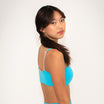
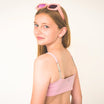
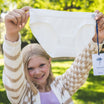
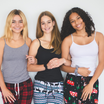

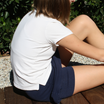
Leave a comment